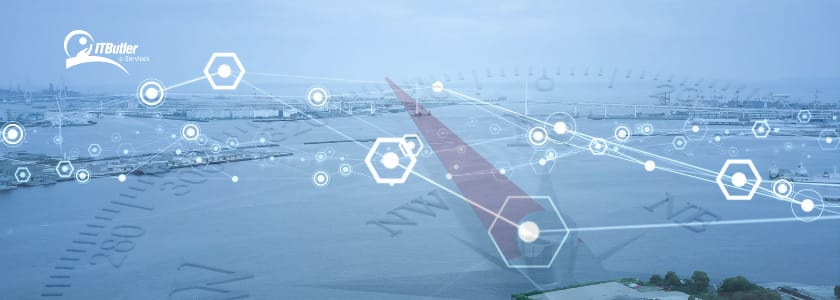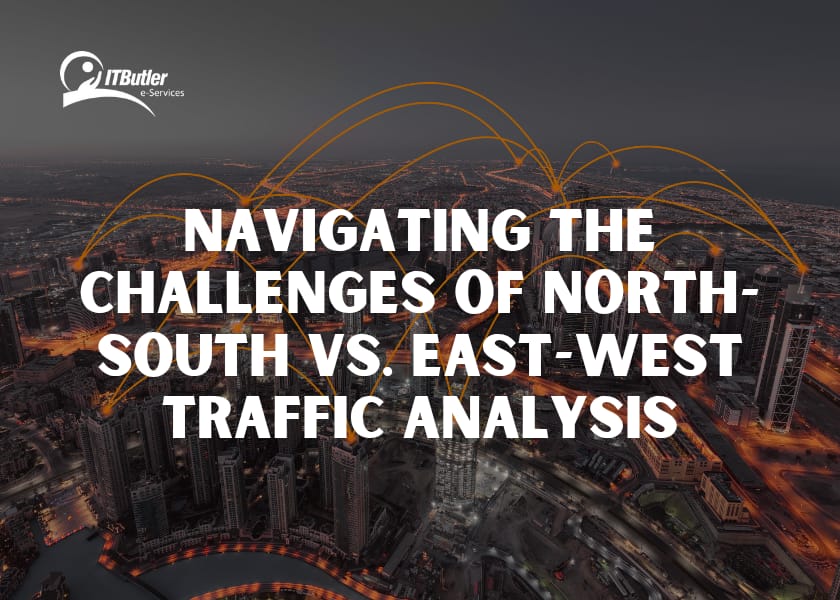Has your network ever been in question whether it has a sufficient protection mechanism against modern traffic patterns? As given the increasing complexity of attacks, it’s important to be concerned with the traffic flow both in the east and west. But here’s the challenge: question: how can these traffic types be analyzed to identify how they increase exposure and how to mitigate them? Network traffic analysis and problematic traffic monitoring will be discussed in this blog. It will include north-south vs east-west, network segmentation, and the problems with managing these issues.
What Is Network Traffic Analysis?
Network traffic analysis means the actual study of the data in the network and continues to identify the threats, the performance, and the security. Therefore, by analyzing traffic, you gain insights into:
- User behavior
- Application performance
- Potential security risks
However, traffic within networks flows in two main patterns: north-south and east-west.
North-South vs. East-West Traffic: What’s the Difference?
1. North-South Traffic
The traffic between internal networks and other entities (internet, outside data centers) is what is known as north-south traffic.
Key Characteristics:
- However, it refers to client-server requests and vice versa.
- Moreover, the use of firewalls or gateways as is the case with VoIP.
Example: An individual who puts documents onto a server or downloads them from one by or surfing a website.
2. East-West Traffic
Darktrace refers to the traffic between the internal network. However, it mainly consists of the servers, applications, and devices that are connected internally.
Key Characteristics:
- Essential for cross-MPAN communication within the network.
- Further, it is more difficult to monitor because it is vast and is characterized by numerous and diverse interactions.
Example: Interaction of the microservices in distributed applications.
Thus, it is crucial to know these traffic types to assess the risks and mark the necessary network segments.
Why is Network Segmentation Necessary?
1. Limits Attack Spread
However, segmenting the network into smaller zones decreases the likelihood of an intruder exploiting an access point and penetrating through to the other sections of the network.
2. Enhances Visibility
One benefit of segmentation is that you can give attention to east-west traffic which normally is not well detected in traditional configurations.
3. Improves Compliance
Some businesses need to be separated to conform to the rules of protecting a company’s data.

Challenges in North-South vs. East-West Network Traffic Analysis
1. High Data Volume
Modern networks bear huge loads of information. For instance, it does not support the generation of information both on the north-south and east-west traffic.
2. Lateral Movement Detection
Cybercriminals also tend to go horizontally (east-west) after gaining an initial foothold in the network. So this is a movement that can only be easily deciphered using sophisticated equipment and ongoing analysis.
3. Diverse Protocols
Here we can also see that networks utilize all forms of protocols ranging from HTTP to personal communication means. Because weal-time analysis of all these is an issue.
4. Legacy Systems
However, older systems are most likely to lack the ability to process traffic analysis at a higher level and there are security gaps.
Strategies for Effective Network Traffic Analysis
1. Use of Advanced Traffic Monitoring System
Technology such as DPI and NDR can detect both the north/south and east/west traffic in real-time.
Benefits of NDR for Traffic Analysis:
- The disappointing value is to identify unnecessary patterns or an abnormality in a particular pattern. As it detects the lateral movement within the network.
- Moreover, this centers on machine learning by reducing false positives, which gives worse results than other classifiers.
2. Use Self-Learning AI
Darktrace is one of the few tools that can learn how your network functions. Thereby be able to tell when something is wrong and not conform to the norms of the network.
3. Implement Microsegmentation
Microsegmentation is different from traditional network segmentation since it brings about smaller and more secure areas.
Advantages:
- Limits attacker movement.
- Supports improvement in the observation of the traffic flow from the east to the west.
4. Adopt a Zero Trust Model
The essence of Zero Trust involves assuming that each interaction in the network is untrustworthy and needs to be authorized.
Analyzing East-West Traffic
The north-south traffic is relatively easy to police. As there are implementational tools for its identification, such as firewalls. However, the main problem of identifying the east-west traffic is that there is no main tool for its identification.
Why Would One Want to Highlight East-West Traffic?
- High Risk: If the attackers gain initial access, most will use an east-west technique to move laterally.
- Data Sensitivity: Moreover, internal communications always comprise of essential information.
Steps to Improve East-West Analysis:
- Increase Visibility: It is possible to track Internal communication through the use of analytical tools such as NDR and DPI.
- Enforce Policies: Control access between devices or systems must also be stringently enforced.
- Automate Detection: Therefore, a person should use machine learning to identify abnormal patterns.
How to Address Traffic Monitoring Challenges
1. Invest in Scalable Solutions
The tools that I select should develop with my network. So growth-responsive systems are those systems that are capable of managing a growing amount of data without getting at the rate of a snail.
2. Integrate SIEM Tools
Network security devices such as Security Information and Event Management (SIEM) consolidate information from different points. So that a network’s traffic can be viewed in its entirety by the security team.
3. Focus on Threat Intelligence
Typically, the analyst can include global threat intelligence feeds, a possibility that assists the analyst in combating various new attack methods.
Techniques for Efficient Network Traffic Analysis
1. Darktrace
A leading AI-based tool for monitoring north-south and east-west traffic, offering:
- Self-learning capabilities.
- Moreover, real-time anomaly detection.
2. SolarWinds Network Traffic Analyzer
However, a powerful traffic analyzer for revealing potential problems and guessing the utilization of the channel.
3. Cisco Stealthwatch
Concentrated on direction and identification of east-west traffic flow as well as the lateral traffic shift.
Future of Network Traffic Analysis
Since the Internet has become even denser with cloud computing, IoT, and distributed work traffic analysis is changing. However. Future advancements will likely include:
- AI-Driven Insights: As AI will not only be able to identify threats but also to prevent them from taking place.
- Full Network Visibility: Moreover, software applications that give full circle perspectives of intra and extranet activity.
- Faster Responses: On this note, detection and response time will be shortened to virtually real-time by automation.
Conclusion
However, analyzing traffic and distinguishing north-south from east-west connections is by no means easy. But thanks to the latest technologies you can still use various tools. As implementing network segmentation and investing in Lateral Movement Detection.
Thus, you are to realize that traffic monitoring is not a question of the tools only. It is a task of learning your network, and becoming timely to prevent potential threats.





